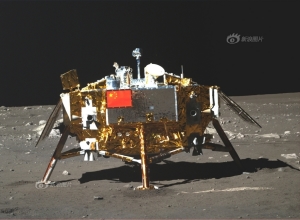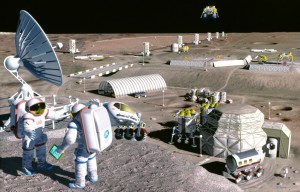China’s Chang’e 3 lunar lander made a spectacular reappearance last week, waking up from the 14th hibernation cycle. The lander’s primary objective was to capture spectrographic and ground penetrating radar readings, but the “shiny jewel” in the coffer was the fusion ready helium-3.

Photo of Chang’e 3 on the Moon
Helium-3 has the potential of a fusion fuel, but the difference is that it doesn’t create neutrons as a product of the reaction. The protons generated thus, carry a charge and can be easily contained with the help of electromagnetic fields. The initial hopes to find helium-3 were towards Saturn or Jupiter, but as it seems, China has its eye on the big prize, our own Moon.
“Farming” helium-3 on our Earth would be a tricky and less fruitful process. The little amount we get is generated via several terrestrial phenomena like cosmic ray bombardment and even from leftover atomic warheads. The Sun emits large quantities of helium-3 whenever it blows, but the amount that gets to Earth is greatly diminished by our planets magnetic field.
It might sound crazy enough, but mining the entire lunar surface for helium-3 will have added benefits. As is the case with mining operations on Earth, where rare metals are piggybacked upon the exploitation of other, cheaper ones. In other words, a lunar exploitation could yield with raw materials, such as titanium.
A lunar exploitation comes with the advantage of no environmental harm, since the Moon is quite a barren landscape. Even though the West will call upon old space treaties and lunar conservation rhetorics to make justification for their lack of initiative and action, China will most probably go on with planing of the operation. The need for helium-3 is rapidly rising. Even the DHS (Department for Homeland Security) was hoping to use helium-3 in order to detect smuggled plutonium, by catching traces of the telltale neutron emissions. The entire process of “Moon-Mining” will be surely difficult. Human man power will be required to steer to whole operation, even if robots will be used as well. The versatility and adaptability of the human component can’t be replaced by robotic counterparts, at least not in this line of business where man-power is still needed.

